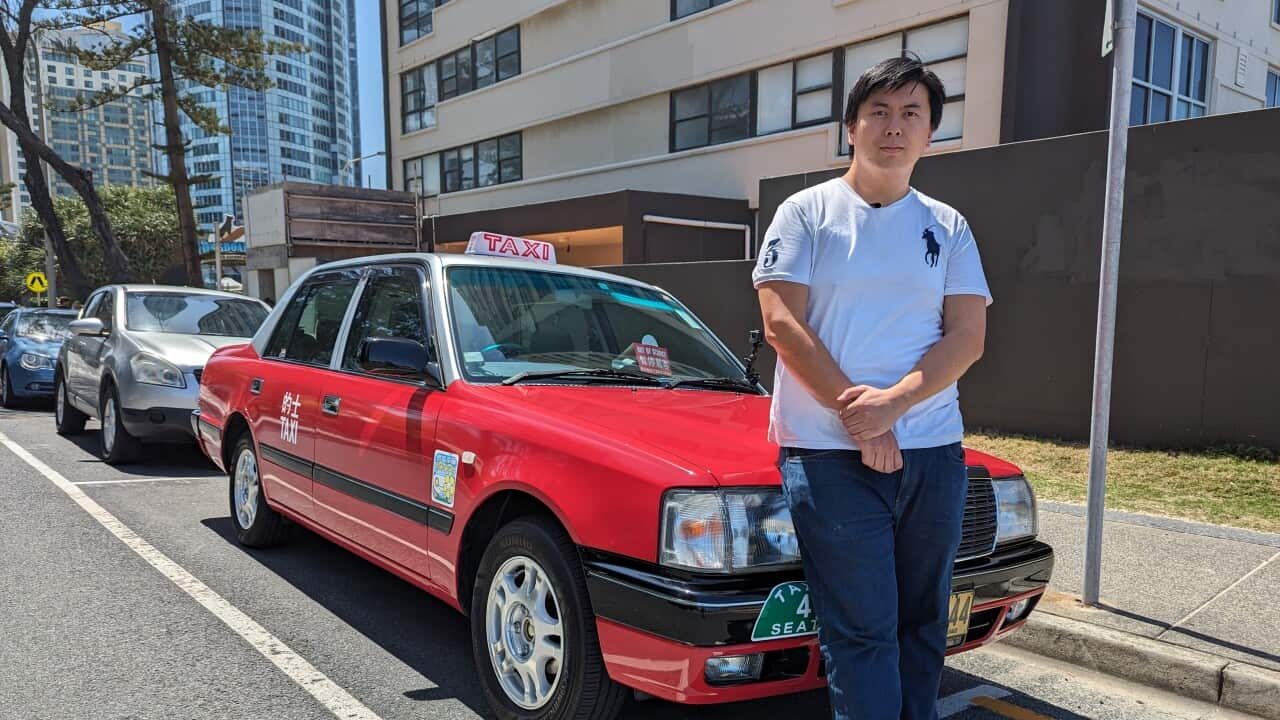Key Points
- Home Affairs data shows that almost half of parents’ visa holders in Australia are from China.
- An expert said that China’s 'one-child policy' played a role in Chinese parental migration to Australia.
- The processing time of newly lodged parents’ visa applications can be up to almost 30 years.
Chinese philosopher Confucius once reportedly said that as long as older parents were alive, their children should not travel too far.
It's a proverb that still resonates 2,500 years on, leaving some Chinese adult children living overseas in places like Australia perplexed when it comes to taking care of their ageing parents.
Emma Zhang is a first-generation Chinese migrant to Australia and an only child who feels compelled to live closer to her parents.
She said she submitted the Contributory Parent visa application in early November to prepare for her parents to come and live in Australia after retirement.
For our generation of only children, we wish (to have) our parents around so that we can look after them.Emma Zhang
“It’s not practical to rely on my cousins to take care of my parents [in China],” she said.

Some young migrants working abroad like Emma Zhang bring their parents to Australia to be able to better care for them. Source: SBS / Yifan Gan
Decades of waiting
However, Ms Zhang will have to wait decades before her visa application is granted.
A Department of Home Affairs spokesperson told SBS Chinese that it can take at least 29 years for low-cost Parent and Aged Parent visas, and 12 years for the high-cost Contributory Parent visas to be granted based on current planning levels and the numbers of applications lodged.
The demand for these visas is strong and has consistently exceeded the available places, resulting in an upward trend in processing timeframes in recent years.Department of Home Affairs spokesperson
Dr George Tan, a lecturer in the Department of Geography, Environment and Population at the University of Adelaide, explained one of the reasons for the decades-long wait times was that the demand for parent visas had increased while the places given in the parent migration stream had gradually decreased over time.
Over the past decade, the quota for parent migrants has declined from nearly 9,000 in 2013/14 to 6,805 in 2018/19.
During the pandemic period, this number dropped to 4,500 before increasing to 8,500 in the 2022-2023 fiscal year.
“Between 2010 and 2022, we've seen the backlog increase from about 35,000 to about 120,000 applicants,” he said.
Currently, more than 143,000 parents are waiting on the growing parent visa categories applications list.

For newly lodged parent visa applications, the processing period can take decades. Source: EPA / HOW HWEE YOUNG/AAP Image
Generation of China’s only children
The one-child policy in China, implemented between 1979 and 2015, created a generation of only children, leading to increased elder care dilemmas for this generation and its ageing parents.
Dr Tan said he believed that the policy played a role in Chinese parental migration to Australia.
“When you have one child, there is a tendency for them [Chinese parents] to come and reunite with the only child in Australia,” he said.
“A lot of Chinese parents are getting older ... there's a real obligation that their children should look after them [as well]."

Dr George Tan said that China’s one-child policy played a role in Chinese parental migration to Australia. Credit: Dr George Tan
Recalling when she first considered the idea of migrating to Australia, Ms Lu said she was hesitant because it meant losing her social networks and community ties in China.
But she said she changed her mind when she saw her friends in hospital and their children rushing back to China from abroad to be there for them.
Sometimes, the parents have already died by the time the child comes back and they have to live with the guilt.Peiying Lu
"I don't want my son to come back and forth [between Australia and China] when I'm sick."

Peiying Lu moved to Melbourne to reunite with her only son as a parental migrant in 2016. Credit: Peiying Lu
'I'll follow my son'
Ting Li, a 57-year-old from northern China who moved to Sydney in August this year, echoed Ms Lu's views.
Ms Li told SBS Chinese that her only son's settlement in Australia was the main driver of her own migration.
"If he moves back to China, I’d follow him back as well," she said.
The traditional Chinese view is everything revolves around our children. They are everything to us.Ting Li

Ting Li (L) moved to Sydney in August 2023 after her Contributory Parent Visa (Subclass 143) application was granted in May. Credit: Ting Li
From 1 January to 31 October 2023, a total of 22,056 parent category visa applications were lodged, of which 56 per cent were from China (12,339).
Scant detail of parental visa reform despite growing demand
Although the parent visa applicant list is expanding, there seems to be little hope of situations improving by way of policy reform.

Data from the Department of Home Affairs shows that China is the biggest source country for parents’ visa holders in Australia. Credit: SBS Chinese
However, the latest Migration Strategy released on Monday mainly focused on international students and temporary workers in Australia and gave few details of parent visa reforms.
Dr Tan said it is common for Chinese grandparents to help with child care, which kept parents at work.
"If we have such a long waiting period, it really causes a lot of anxiety, not to mention that the cost is very significant as well," he said.
“Are their parents even going to be around at that point?” he questioned.






